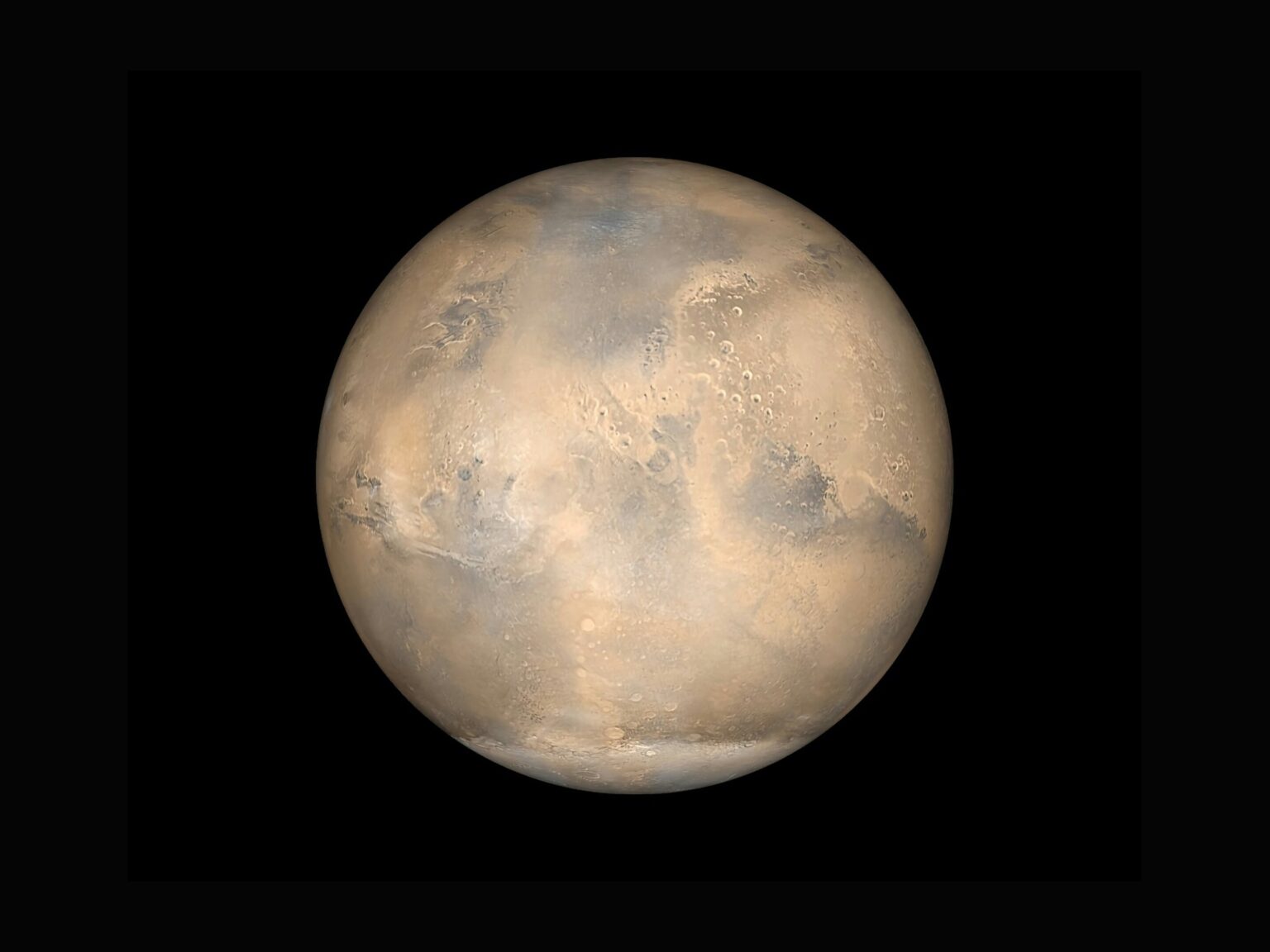In a new study, scientists say that large lakes under the ice of Mars, signs of which have previously been found on radar images of the planet’s polar caps, do not actually exist. These signals are actually caused by small changes in the ice layers.

Scientists’ new study
Researchers at Cornell University provided a simple, although not very interesting, explanation for bright radar reflections that were first interpreted as liquid water beneath the ice cap at Mars’ South Pole.
Their modeling shows that small differences may exist in the water ice layers. They are too thin to be distinguished by radar devices that penetrate the soil, but can cause interference between radar waves. It can produce reflections which intensity and variability are consistent with observations made to date not only in the area thought to be liquid water, but also in the so-called south polar layered sediments.
“I can’t say it’s impossible that there’s liquid water down there, but we’re showing that there are much simpler ways to get the same observation without having to stretch that far, using mechanisms and materials that we already know exist there,” said Daniel Lalich, a researcher at the Cornell Center for Astrophysics and Planetary Sciences.
Discovery of the subglacial lake
Robotic explorers have provided numerous evidence that water flowed on the surface of ancient Mars, including in a former river delta currently being explored by NASA’s Perseverance rover. Information from radar that can probe beneath the surface to detect water ice and potentially hidden aquifers, members of the European Space Agency-led Mars Express orbiter science team announced in 2018 that they had discovered a lake buried beneath the south polar cap.
This made quite a stir: wherever liquid water exists, microbial life can be found. But while the same bright radar reflections would probably indicate an under-ice lake on Earth, on Mars they could mean something else because of the different conditions.
Simple explanation
Using simpler models, Lalich has previously shown that bright radar signals can be created in the absence of liquid water. At the same time, assumptions about the layers of frozen carbon dioxide under the ice cap were probably wrong.
A new study tells a more complete story, closing gaps in the radar interference hypothesis with more realistic modeling. Thousands of randomly generated layering scenarios were based only on conditions known at the Martian poles, and changed the composition and spacing of the ice layers in ways that would be expected over distances of tens and hundreds of kilometers.
These small adjustments sometimes produced bright subsurface signals that were consistent with observations at each of the three frequencies used by the Mars Express orbiter’s MARSIS radar instrument, a partnership between NASA and the Italian Space Agency. Radar waves reflected from layers too close for the instrument to distinguish can combine to amplify their peaks and troughs.
According to phys.org


